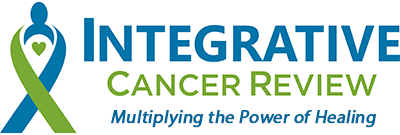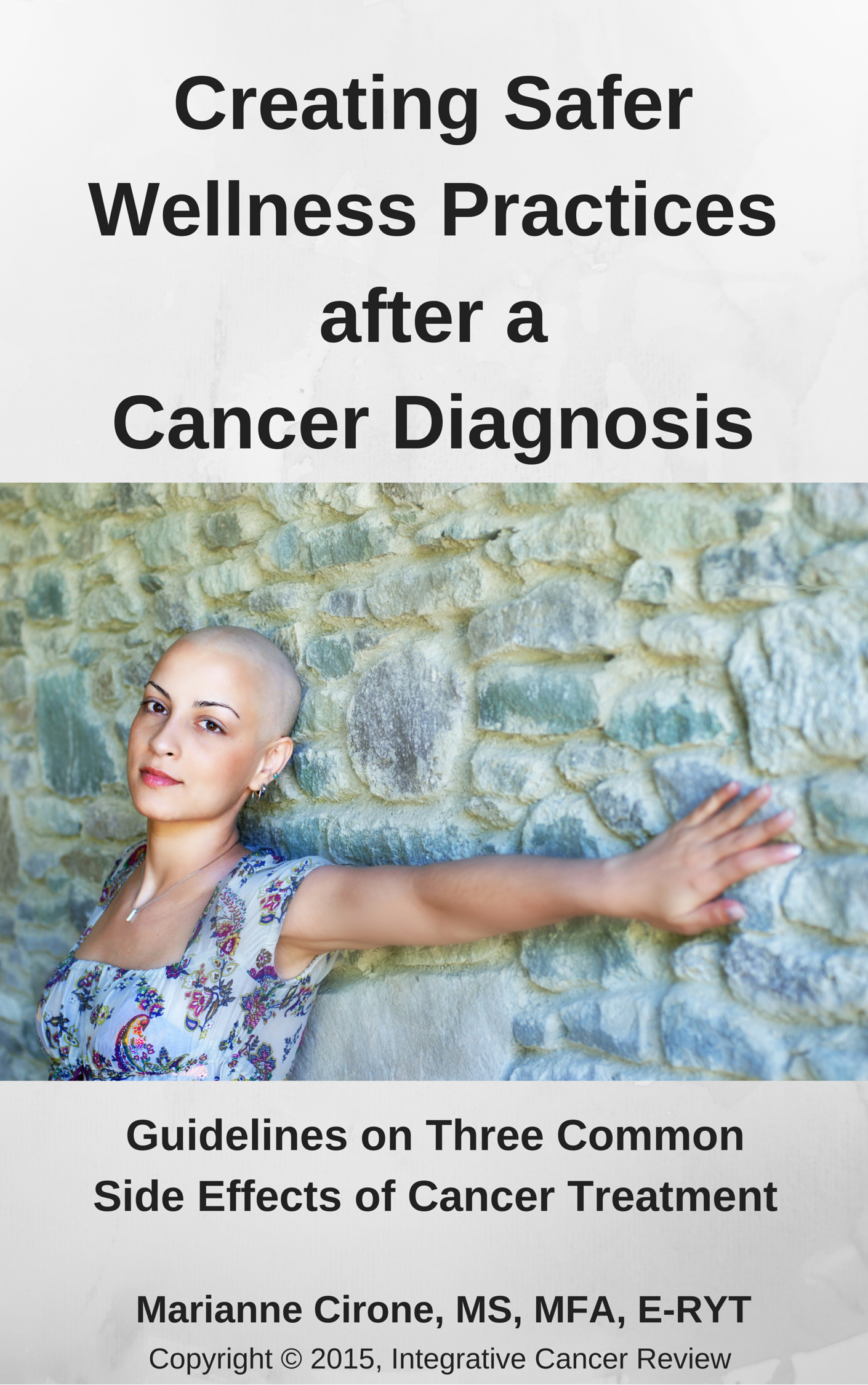
As the Program Coordinator for a new cancer resource center in a demographically diverse area, my colleagues and I are particularly focused on providing culturally inclusive programs. Waterford Place Cancer Resource Center, a department of RushCopley Medical Center, opened in December of 2015 in Aurora, Illinois. Our programs have expanded geometrically since then, but we have first had to learn how to best serve our community. Our mission is to provide psychosocial and wellness support for cancer patients, survivors and caregivers/family members in areas ranging from yoga and healthy cooking classes to oncology-modified massage and skin care. While conventional medical treatments are still the cornerstone of cancer care, we know that the emotional, mental and spiritual aspects of healthcare are also important.
Although the notion of integrative cancer care is not exactly novel, some aspects can still be met with mixed emotions, misconceptions and even ambivalence. All of these factors can potentially contribute to the underutilization of integrative cancer care services. Several pervasive cultural and social messages may perpetuate this perception. This article enumerates some of the potential barriers to access to psychosocial support services for cancer patients and their loved ones, and how they can be addressed for greater utilization of beneficial services.
 Jill Setork, MS, LCPC
Jill Setork, MS, LCPC
Program Coordinator for Waterford Place Cancer Resource Center
Jill holds a Master of Science in Clinical Psychology from Benedictine University and is a Licensed Clinical Professional Counselor. Jill has experience working in various professional capacities with people of diverse ages and backgrounds that have been impacted by a cancer diagnosis. As the Program Coordinator for Waterford Place, Jill utilizes her skills and training to help design programming that will assist participants through their cancer journey.
Click here for more information about Waterford Place Cancer Resource Center and their cancer support programs.
Cultural inclusivity needs to be addressed both nationally and globally to accommodate today’s rapidly changing climate. Creating a sense of belonging ranks amongst the top objectives in an integrative cancer care setting. In order for a participant to fully invest in addressing the non-medical facets of a cancer diagnosis, the person must first feel safe. Regardless of how useful the programs are or the fact that they are offered free of charge, if the patient or caregiver doesn’t feel welcomed or comfortable, there may still be a barrier to participation.
Potential Barriers to Access at an Integrative Cancer Resource Center
One of my favorite things about Waterford Place Cancer Resource Center is that everything we do is offered to the community free of charge. This establishes an even foundation for all patients and their loved ones, allowing everyone access to evidence-based programs and services regardless of economic constraints. Research shows that utilization of integrative cancer care services positively correlates with improved quality of life, decreased risk of recurrence and improved tolerance of treatment. Offering our programs free of charge ensures that they are all accessible without participants having to be concerned about how to afford them.
While this helps a great deal, other barriers still exist, namely, establishing and maintaining a culture of inclusivity, where every person regardless of gender, race, religion, etc., feels safe and comfortable to participate. Lofty as this goal might be, we have gathered continual and intentional participant feedback that has helped us to move closer to achieving this culturally inclusive environment.
Being part of a brand-new organization, although it has its challenges, has come with many benefits. We feel fortunate in that we have been able to include our participant’s feedback and input from the very beginning, ensuring that we are designing and implementing programs that meet the current needs of our community. This meant that we first had to learn about our community. By looking at the demographics, we can tailor and promote services according to the population that we serve.
When Waterford Place first opened, our approach was to create programs that the research has shown to be helpful—the idea that “if we build it, they will come.” Well, we built it…and they didn’t exactly flock as expected. So, then we had to figure out — why not? And when we looked into this questions, we discovered several interesting facts.
The Need for Self-Care Education
Education has emerged as the most important aspect of everything we do. When we first started offering programs like Reiki and Guided Meditation and the attendance was low, we wondered why. Even our support groups did not have the expected attendance. As we looked into what was happening, we quickly discovered that either the participants didn’t know what these programs were, or they had misinformation that deterred them from participating.
Consequently, one of our major objectives is to debunk myths and/or perceived conflicts about integrative modalities. Prior to offering any new program, we now offer an introductory session — for example, we now schedule a “What is Reiki?” class prior to implementing a Reiki program.
One notable barrier we have found is the perceived conflicts between mindfulness-based practices and religious beliefs. Because we have found these perceptions to be pervasive in both the Hispanic/Latino community and the African American community, it has been essential to addressing these concerns.
In an article by The Atlantic titled “Why Your Yoga Class is So White” by Rosalie Murphy, the author quotes a 2009 study in the Journal of Religion and Health that found that 63 percent of African Americans and 50 percent of Hispanic Americans pray to improve their health.
Thus, we can see that prayer plays a major role in both the Hispanic and the African American communities as an approach to improved health. Yet, this practice can also limit participation in other behaviors that can improve one’s health, such as meditation. The author goes on to say that education about yoga (as well as other types of complementary practices) is imperative, otherwise there may be the misconception that they compete or conflict with religious beliefs.
Another potential barrier that we have found is the perception that accessing self-care type services can be interpreted as being “weak.” We have developed lines of communication in the African American community, including participants, church pastors and other professionals in the community who have corroborated this perception. It is our hope that that by partnering together and providing education and support, we can dispel the idea that getting help in any way communicates “weakness” and reach all who are impacted by cancer, so that no one feels as if they must go through it alone.
Stigmas about cancer are, unfortunately, still very present and manifest in multiple forms depending on the culture and/or region of the world someone lives. According to the National Center for Biotechnology Information, this “stigma can have a silencing effect, whereby efforts to increase cancer awareness are negatively affected. The social, emotional, and financial devastation that all too often accompanies a diagnosis of cancer is, in large part, due to the cultural myths and taboos surrounding the disease.”
Not only does the disease create vulnerability to judgment, so does the act of getting help. According to a PhD dissertation written by Aikaterini Psarropoulou of Ball State University, those diagnosed with cancer in the African American community fear stigmatization “…such as avoidance from others, undue admiration, lack of social contact, and social isolation, which may increase their stressors.”
In an article published by the University of Iowa College, College of Public Health, it was reported that there is a stigma attached to cancer in the Latino community that is culturally sensitive “…cancer has a sense of guilt attached to it — that you must have done something to get this.” These stigmas obstruct a person’s access to support which can lead to feelings of isolation. We know that the greatest form of emotional healing is via connection, which means that educating the public is a main priority. This is why we have been very intentional about getting out into the community and partnering with leaders who have influence in combatting unhelpful beliefs.
At Waterford Place, we have worked very hard to communicate to each person that our services exist because cancer is hard for EVERYONE. Research backs up the fact that people who get support do better than those who don’t, including this study published in Health Quality Outcomes. Getting help doesn’t make one weak, it helps one to have the strength to continue to endure and persevere.
Timing of Program Offerings
Life doesn’t stop because cancer hits! We cannot assume people who have cancer do not work, have adequate childcare, access to transportation or are free of any other hindrance that would allow them to participate in our programs, much less face the challenges of everyday life. Unfortunately, cancer treatment and all that comes with it, can be just another item on a patient’s “to do” list.
Flexibility in day/time of program offerings is crucial. Interestingly enough, we have found a few “sweet spot” times that essentially accommodate both the not working and working populations. For the individuals who are not currently working, post-lunch afternoon programming (roughly 1-2:30pm) seem to be ideal for both the actively treated and the retired crowd, in that it does not require early arrival and gets the participant home before dark.
For those who work a day shift, our evening programs that run from about 6:30-8pm has been quite effective. This time slot accommodates people with families who need to stop home after work to attend to dinner and childcare arrangements. It also offers the opportunity for patients and caregivers to attend the program together more easily, as they then can carpool rather than meet at the center. With this in mind, we have begun attempting to offer the same program twice, at these varying “sweet spot” times, to ensure that we are able to provide services to as many people as possible without creating hardship or stress — exactly what our programs are designed to alleviate.
Gender Differences
In case we haven’t learned this already, men and women are, in fact, very different, and these differences show in how each perceives a cancer resource center. The idea that our center is designed to look and feel like a home is helpful in some ways and a deterrent in others. Through the innovative work of Dr. Mark Rosenbaum, a Fulbright Scholar, Professor and Department Chair at the University of South Carolina, we have learned several important facts about gender differences in accessing cancer support services.
Dr. Rosenbaum’s research shows that a home-like setting is more attractive to females than it is for males, which can lead to an environment populated with more women than men. This can potentially further deter men from participating, an unspoken question of belonging can emerge. At Waterford Place, we have worked to incorporate inviting elements for both male and female participants in an effort to provide a definitive message of welcoming.
A Creating groups and classes that are for men only or women only, seem to ease apprehension about participating. Groups where spouses and family are encouraged to attend along with the participant can also enhance participation for both sexes. Having program facilitators of each gender, as appropriate, also goes a long way in setting an inviting atmosphere for both sexes.
One example is having a Men’s only group as well as providing food which creates a more informal and comfortable atmosphere for the men. Food has a disarming nature that unifies those who partake in sharing the meal together.
Unifying factors, regardless of how small, can make a critical difference in bringing people closer to achieving the connection they are looking for. Research shows that connection can be one of the most healing elements of all: the experience of feeling like you are not alone, not wrong to feel or think how you do and that you exist amongst others who truly care, as noted in this article in The New Social Worker®.
Communication Strategies
As there are “love languages” that you may have heard about in relationship psychology, there are “help” languages too. Not everyone will benefit from the same programs in the same way. For example, Offering a cancer specific support group doesn’t mean that is the modality the participant with that cancer type would benefit from the most.
As we have fine-tuned our participant orientation process, we have found that the most important piece of the process is having an in-depth conversation with the participant. During the conversation, we are able to convey that our mission is simply to help, and that we want to learn how to best do so for each unique person.
The most helpful navigational tool has been to learn about the participant’s existing or previous strengths or supports. What IS working? What HAS worked in the past? In this way, we are not reinventing the wheel, but capitalizing on the innate resiliency the participant has already cultivated overcoming adversity. Reminding them of their strengths and recommending programs that are in alignment with and will build on these established characteristics will set the person up for the greatest success. The strength-based approach has proven to be the most effective in establishing rapport as well as steering participants in the direction that will be most efficacious for them.
Balancing Diversity and Belonging
Attempting to accommodate for the universal desire for belonging, while existing amongst diversity has been one of the biggest challenges for our center. We are striving to accommodate for differences while unifying individuals through a shared experience. However, everyone’s cancer experience is also unique. Not only do we come from dissimilar backgrounds and beliefs, but cancer diagnoses behave in different ways.
Although we are mindful of this as we roll out programming, the experience of feeling understood is a profound one. How does that happen? Validation occurs when participants feel heard in the experience of not being understood. Everyone in the room knows what it is like for the people in their lives to not really “get” what they are going though. Sometimes that is enough. And then sometimes participants will interact with others who DO get it. Either way, the healing happens through connection. According to David Spiegel, M.D. and Catherine Classen, Ph.D., the authors of Group Therapy for Cancer Patients, there is actually more therapeutic benefit from support groups than individual counseling, due to the element of empathic connection through a shared experience.
When Hope Meets Help, Healing Happens
As a result of these observations, we have refocused our orientation process to be an engaging, welcoming, genuine interaction that encourages each and every person to utilize our space, programs and services in whatever way works best for him/her. In a short time, this warm and personal approach has been shown effectively overcome individual barriers.
A person-centered approach delivers the message that whatever race, color or creed a person is, the experience they are having is a human one. In this way, the pressure lessens, the anxiety eases and the hope sets in. This is when a person becomes receptive to help — and we have found that when hope meets help, healing happens.
“Anything that’s human is mentionable, and anything that is mentionable can be more manageable. When we can talk about our feelings, they become less overwhelming, less upsetting, and less scary. The people we trust with that important talk can help us know that we are not alone.” — Mr. Rogers














